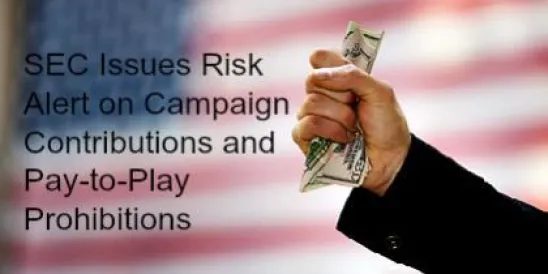Click here to see other Toolbox articles.
EB-5 investors are eligible for an EB-5 immigrant visa if they have invested the required amount of capital into one of the three following for-profit business types:
-
A new commercial enterprise (NCE);
-
An enterprise which will expand to 140% of pre-investment net worth or number of employees, or;
-
A troubled business in which jobs will be preserved.
Choosing an Investment
There are many decisions to be made prior to deciding upon what type of investment to make and the specific vehicle to utilize. For example, investors that choose to place the required funds in their own company should first consider other visa types that may be better suited to the investor’s personal circumstance instead of the EB-5 category. Investors may also wish to consider reviewing projects that are affiliated with a Regional Center and those that are pooled funds in “direct investments.” Whatever choice is made, it is critical that an investor spend the time and money required for adequate due diligence on an EB-5 project and/or adequate planning for the investment.
Applying for a Visa
Once an investor has selected the investment and made the necessary arrangements for the particulars (including funds transfer, escrow arrangements, etc.) an I-526 Petition by Alien Entrepreneur is filed with U.S. Citizenship and Immigration Services (USCIS). The investor must submit the following evidence:
-
that he/she has invested in a “for profit” new commercial enterprise;
-
if applicable, that the new commercial enterprise has been established and is principally doing business in a targeted employment area (TEA);
-
that the investor will be actively involved in the management of the new commercial enterprise;
-
that the individual has invested or is in the process of investing the amount required ($1,000,000 or $500,000 if the investment is located in a TEA);
-
that the investment funds were obtained through lawful means;
-
that the new commercial enterprise will create at least ten full-time positions—not including the investor, his/her spouse or children, or any temporary or nonimmigrant workers, or individuals who are not authorized to work in the United States;
-
a comprehensive business plan showing that, due to the nature and projected size of the new commercial enterprise, not fewer than ten employees will result from that individual’s investment (Regional Center projects will also include an economic analysis that describes how the requite number of jobs are being created as these projects can count indirect and induced jobs); and
-
for Regional Center-affiliated projects, the investor must show that the capital investment was made in accordance with the Regional Center’s business plan.
The USCIS has increased scrutiny in its review of the investor’s lawful source of funds ensuring that adequate proof detailing a clean and legal source is submitted. The government is also interested in the pathway for funds, tracing how the funds left the investor’s control and entered the project. Investors using gifts should also be prepared to verify where the donor originated the funds. A blog posting is upcoming on this issues.
The current processing time for I-526 petitions is expected to significantly decrease according to the new EB-5 Office located at USCIS Headquarters in Washington DC. The transition to electronic filing through the ELIS program should also assist in minimizing processing times.
After the Conditional Visa is Approved
Upon approval of the Form I-526 petition, the investor will process either:
-
if physically present in the United States, an Adjustment of Status application with the USCIS to adjust status to conditional permanent resident within the United States, or
-
if abroad, an Immigrant Visa package with the Department of State to obtain an EB-5 visa for admission to the United States at the appropriate Consulate
Processing times for Adjustment of Status petitions are fluid but can be as long as two years. Fortunately, investors can apply for travel and interim work authorization while the application is pending with the USCIS. Processing times at the US Consulates are also fluid but generally significantly shorter (6-9 months). The EB-5 investor and his/her derivative family members are then granted conditional permanent residence for a two-year period upon the approval of the I-485 application or upon entry into the United States with an EB-5 immigrant visa.
Family Members of the Immigrant Investor
As noted above, spouses and dependent, unmarried children under the age of 21 (derivative family members) may accompany or follow to join the investors. There are special rules involved for children who turn 21 during the process that should be discussed with legal counsel. Other considerations include admissibility issues that could be triggered by a previous arrest or health issues. Competent legal counsel should vet these matters prior to embarking on the initial petition.
Gaining Permanent U.S. Residency
In order to ensure that the requirements of the EB-5 regulations have been fulfilled, the investor will need to file Form I-829, Petition by Entrepreneur to Remove Conditions, ninety days prior to the two-year anniversary of the granting of lawful conditional resident status (green card). At that time, the investor will need to present evidence that the investment was made and sustained, the jobs were timely created. The documents required for verification of job creation in a Regional Center project will depend on the methodology used in the economic report. The submission may include receipts for expenditures, contracts, financials and bank statements. In a direct investment project, the USCIS will require submission of the project company’s W-2s, quarterly payroll reports, Form I-9s, and other filings to confirm the creation of direct jobs.
Current processing times for the I-829 petition are twelve to sixteen months but could be longer if there are concerns with the project or if there are general backlogs. The USCIS hopes to reduce processing times in the near future. If the USCIS approves the I-829 petition, then the conditions are removed from the EB-5 applicant’s status and the EB-5 investor and derivative family members will be allowed to permanently live and work in the United States.



 />i
/>i

